Introduction
Silicone rubber compression moldings are unsung heroes of the food and beverage industry, quietly providing consumers with quality, safety, and innovation they have come to expect from products. Though rarely in the spotlight, these important specialized components play a vital role in this demanding sector, which we will explore here in more depth in this article.
silicone rubber compression moldings have become indispensable tools in an industry with stringent safety and quality standards, offering reliable solutions to food and beverage producers’ complex problems.
In this article, we’ll embark on an exciting voyage of discovery as we delve into silicone rubber compression moldings and their many uses in food and beverage processing equipment, sealing gaskets for bakeware production lines, food processing systems and beverage dispensing systems, among many other areas. Silicone compression molding has an array of applications in food production processes; here, we explore its purpose, use cases, benefits to enhancing safety standards as well as how sSilicone Compression Molding Defined.
Silicone compression molding is a manufacturing technique used to transform liquid silicone rubber into numerous components and products. The technique has long been recognized for creating custom parts tailored specifically for certain industries – in this instance the food and beverage sector.
The silicone compression molding process involves several essential steps.
Material Prep: Step one in material prep involves selecting high-grade silicone rubber, known for its remarkable properties like temperature resistance, flexibility and nontoxicity. Careful selection is necessary in meeting the stringent standards set forth by food and beverage industries.
Compression Molding: Silicone material is placed into a mold designed to achieve its intended form, often known as a molding tool, for this process. Heat and pressure will then be applied, forcing the silicone into taking on its intended shape within its mold cavity.
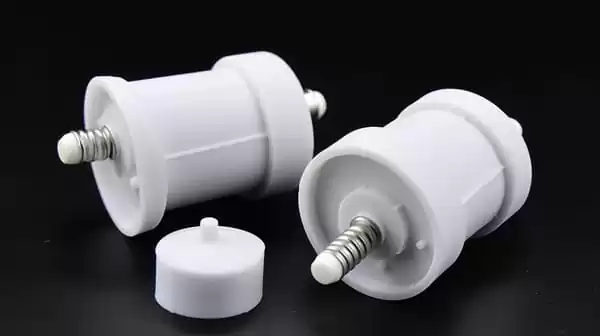
Cooling and Removal: Once the silicone cools and solidifies in its mold, the product should be carefully extracted by cutting away excess material until only an exact replica remains – ready for use in its intended role.
Silicone compression molding stands out among its rivals with its ability to craft customized components, an invaluable capability in food and beverage industries where applications may call for different shapes or sizes of parts. From seal gaskets and custom molds for confectionerie items to sealing gaskets designed specifically to seal against environmental contamination – silicone compression molding offers versatility to meet varied requirements.
Custom designed silicone rubber components offer greater utility and efficiency for specific applications than prefabricated components; their adaptability allowing silicone compression molding to play an instrumental part in many facets of food and beverage industries, from sealing gaskets to intricate bakeware molds.
Following are various applications of silicone rubber compression moldings in food and beverage production and how their versatility contributes to safety, quality, and innovation in this sector.ilicone rubber compression molding ensures integrity within products we consume every day.
So let’s dive in and discover all of those unsung heroes responsible for making our food and beverages not only delectable but also safe and secure!
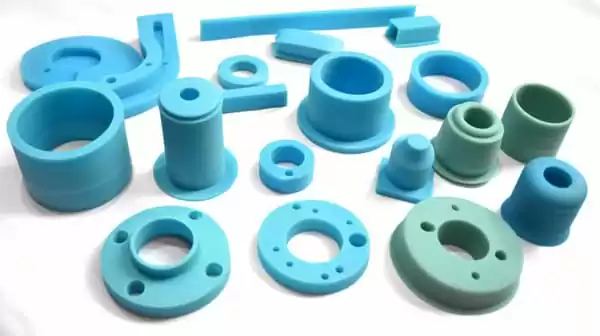
II. What Is Silicone Compression Molding?
Silicone Compression Molding Defined
Silicone compression molding is an efficient manufacturing technique used to transform silicone rubber into components and products of all sorts, especially within the food and beverage industries. It has gained prominence for creating customized parts with intricate details designed specifically to fulfill specific applications – for instance in packaging applications for instance.
Process of Manufacturing Silicone Rubber Components
The silicone compression molding process involves several key steps.
Material Prep: Prep begins by selecting high-grade silicone rubber, known for its superior properties such as temperature resistance, flexibility and nontoxicity. Careful material selection is crucial to meeting the high standards set forth by food and beverage industries.
Compression Molding: Silicone material is placed into a mold designed to form its desired form. This liquid silicone injection molding process, also referred to as a molding tool, serves as the framework that enables silicone material to take on its intended shape and become part of it. Heat and pressure are applied directly onto this tool until heat-activated silicone conforms itself into its mold cavity shape.
Cooling and Removing: Once the silicone cools and sets within its mold, any excess material must be carefully trimmed away before being carefully extracted from its mold for removal – leaving behind only precisely formed silicone components ready to use in any application.
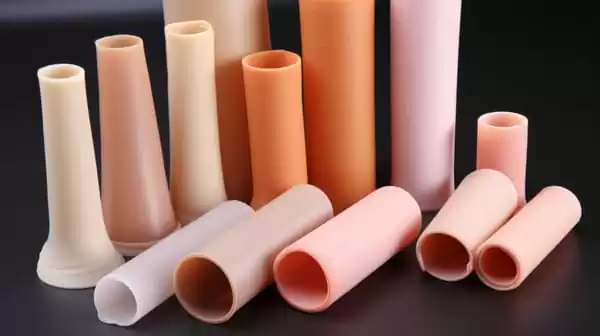
Custom-Designed Capabilities are Now Available
Silicone compression molding stands out among its rivals as one of the few processes capable of creating custom-shaped components, something particularly useful in food and beverage manufacturing environments that often necessitate unique shapes or sizes for applications like sealing gaskets or custom confectionary molds. Silicone compression molding’s flexibility gives companies in these fields access to parts designed specifically to their requirements – something not possible with traditional molding techniques alone.
Custom designed silicone rubber components ensure silicone compression molding components can be tailored specifically to specific applications, increasing both efficiency and utility. Due to its adaptability, silicone compression molding plays an integral role in various areas of food and beverage manufacturing – from gasket sealing applications to intricate molds for bakeware molds.
Following, we will explore various applications of silicone rubber compression moldings and their various uses within food and beverage sectors, specifically. These moldings contribute to food food grade lsr, quality, innovation, and advancement – key attributes essential for their use within these sectors.
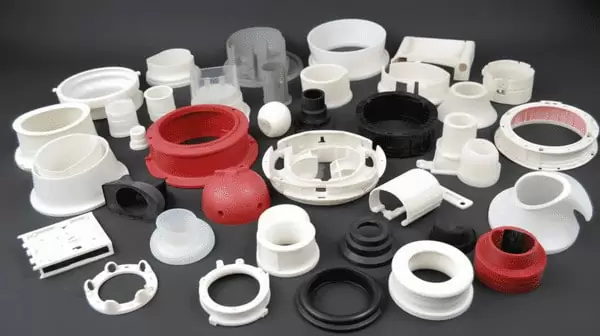
III. What Is Silicone Molding Used For?
Silicone moldings are incredibly versatile and find a wide range of applications in various industries, including the food and beverage sector. Let’s explore some of the diverse uses of silicone moldings:
Sealing Gaskets:
Silicone moldings are employed to create sealing gaskets in food and beverage containers. These gaskets ensure airtight and leakproof closures, preserving the freshness and quality of the contents.
Bakeware:
Silicone molds are widely used in bakeware and confectionery. Their non-stick properties, resistance to high temperatures, and ease of use make them a popular choice for creating various culinary delights, from muffins to intricate cake designs.
Food Processing Equipment:
Silicone rubber components are crucial in food processing machinery. Their durability and resistance to chemical cleaners make them ideal for use in this environment, ensuring the hygienic and efficient processing of food products.

Beverage Dispensing Systems:
Silicone moldings are integral in beverage dispensing systems. They provide a safe and reliable means of serving beverages, such as in coffee machines and soda fountains.
Sealing and Insulation:
In the food and beverage industry, ensuring secure connections and maintaining proper insulation are essential. Silicone moldings are used to seal and insulate connections and joints in food processing plants and packaging equipment, preventing contamination and ensuring product quality.
Conveyor Belts:
Food-grade silicone rubber conveyor belts are used in production and packaging lines for efficient material handling. They are known for their durability and ability to withstand the rigors of high-volume production processes.
Kitchen Tools and Utensils:
Silicone rubber components are widely used in the production of kitchen tools and utensils. Spatulas, oven mitts, ice cube molds, and various other cooking and baking utensils benefit from the flexibility, heat resistance, and non-toxic nature of silicone rubber parts.
The keywords mentioned, such as “sealing gaskets,” “bakeware,” “food processing equipment,” and “beverage dispensing systems,” represent just a few of the applications where silicone moldings are essential. Their versatility and adaptability make them a preferred choice in the food and beverage industry, where safety, quality, and functionality are paramount.
In the following sections, we will delve deeper into the significance of silicone rubber compression moldings in enhancing food safety and product quality across these diverse applications.
Silicone moldings have an endless number of uses in multiple industries – especially food and beverage production. Let’s examine some of them now:
Sealing Gaskets:
Silicone moldings are employed to produce sealing gaskets in food and beverage containers to create airtight and leakproof closures that preserve freshness and quality of their contents. These closures ensure airtight seals.
Bakeware:
Silicone molds have become an invaluable addition to bakeware and confectionery due to their nonstick surface, resistance to high temperatures, and easy use – they’re great for creating everything from muffins and cake shapes to intricate masterpieces!
Food Processing Equipment:
Silicone rubber components play a pivotal role in food processing machines. Their long lifespan and resistance to chemical cleaners makes them perfect for this environment, guaranteeing safe and hygienic production of food products.
Beverage Dispensing Systems:
Silicone moldings play a central role in beverage dispensing systems, providing safe and dependable beverages such as in coffee machines or soda fountains.
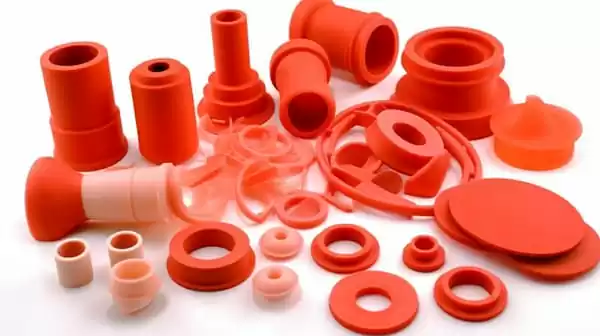
Sealing and Insulation:
Securing connections and maintaining insulation are keys components to success in food and beverage processing and packaging equipment, helping prevent contamination while assuring product quality. Silicone moldings offer reliable sealing/insulation protection that help preserve product quality while simultaneously keeping away contamination.
Food-grade silicone rubber conveyor belts are widely utilized for efficient material handling in production and packaging lines. Their resilience withstands even high-volume production processes with ease.
Kitchen Utensils and Utilities:
Silicone rubber components have become a widely utilized material for making kitchen tools and utensils, such as spatulas, oven mitts, ice cube molds and various other cooking and baking utensils. Spatulas, oven mitts and various baking accessories all take advantage of its flexibility, heat resistance and non-toxicity to increase efficiency while cooking or baking.
silicone moldings have many important applications within the food and beverage industries, from sealing gaskets and seals, bakeware, and food storage containers, processing equipment and beverage dispensing systems to seals that seal gaskets together. Their wide array of uses makes silicone moldings a top pick when it comes to safety, quality, functionality and adaptation – such as sealing gaskets.
As we explore silicone rubber compression molding’s role in improving food safety and product quality across a range of applications, in this series of posts we will look more deeply into its significance for improving safety and product quality across diverse markets.
IV. How Does Silicone Rubber Molding Work?
Rubber molding involves an intricate series of steps designed to meet precise specifications for silicone components created through this process. Let’s delve into these intricacies of silicon rubber molding:
1. Material Prep:
Material preparation begins by choosing high-grade silicone rubber. In food and beverage industries where quality and safety are of utmost importance, choosing silicone material with exceptional properties like heat resistance and nontoxicity makes for the optimal choice for safety and quality assurance. Silicone rubber provides all these attributes – plus many more!
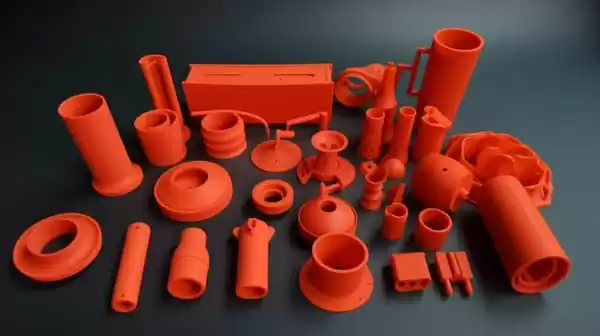
2. Compression Molding:
Once silicone material has been selected, it’s placed into a mold specifically created to create the shape required. This mold, often known as “molding tool,” serves as the framework to allow its intended form to take form in its intended manner.
3. Heat and Pressure Application:
Both elements play an essential part of silicone rubber molding processes. Once the mold has been closed, heat is used to soften and become malleable the silicone material before pressure forces it completely fill the cavity within. Together these forces ensure that silicone mold takes on exact dimensions of mold cavity for which it was intended.
4. Cooling and Solidification:
Once silicone material has settled into its desired mold’s contours, its mold must be cooled for solidification to take place and maintain its new form. This crucial cooling step helps the silicone keep its intended dimensions by setting its structure securely over time.
5. Trimming:
Once the silicone has hardened in its mold cavity, the product should be carefully unmolded from it and any extra material removed with precision before trimming to form an accurately-sized silicone component.
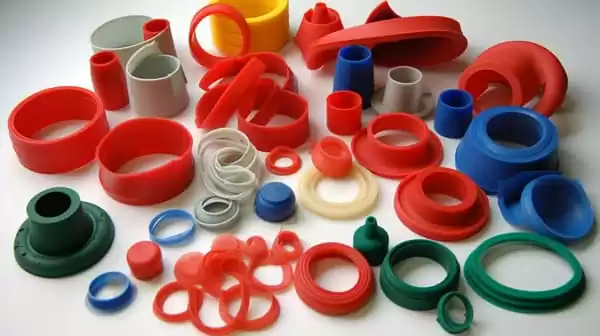
6. Quality Assurance:
In order to ensure silicone components meet industry and safety standards, quality checks must take place on them. Inspections for proper dimensions, surface finish quality and defects that could compromise their performance or safety may take place; for those in food and beverage businesses this includes meeting FDA/NSF regulations compliance as a part of this process.
7. Application:
Once finished molding silicone components, they’re ready for their intended applications – whether that be sealing gaskets, bakeware molds or another silicone-made product, all created specifically to meet the rigorous demands of food and beverage production industries.
Silicone rubber molding is an organized series of steps that transform high-grade silicone rubber material into precision engineered components. Heat, pressure and cooling play a pivotal role in maintaining their shape and integrity; furthermore this method permits silicone rubber components to be tailored specifically to meet unique food and beverage industry applications ensuring greater safety, quality and innovation.
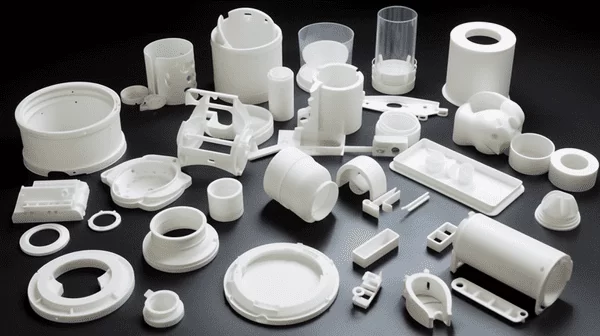
Conclusion
Silicon rubber compression moldings play an integral part in food and beverage manufacturing industries across industries – they’ve long been considered indispensable components. Let us revisit their significance through this exploration series by recapping key insights, outlining specific applications, and outlining any further uses outside food/bev manufacturing environments.
Silicone rubber compression moldings are unsung heroes of the food and beverage industry, quietly assuring consumers of safety, quality, and innovation in products they consume. Made through precise processes, these moldings form the backbone of many applications from sealing gaskets to bakeware conveyor belts to kitchen tools – to name but a few!
One of the outstanding characteristics of silicone rubber compression moldings is their custom-design capabilities, making them invaluable in an industry with constantly shifting needs and challenges. From intricate molds for baked goods production to sealing solutions for food containers, solid silicone rubber compression moldings provide food and beverage industries with flexibility and adaptability they require for success.
These silicone components are manufactured to meet the stringent demands of food and beverage manufacturing industries, including FDA and NSF regulations, with non-toxic nature, resistance to extreme temperatures, ease of cleaning and non-toxicity making them safe to use in food preparation, storage and processing tasks. Our silicone rubber moldings meet those specifications perfectly to safeguard food quality and safety for our food-service providers and clients.
Silicone rubber compression moldings have long been recognized for their usefulness in food and beverage manufacturing; however, their applications extend far beyond this sector. From aerospace to medical devices and beyond, their mechanical stability, adaptability and ability to withstand extreme conditions is highly valued across various fields of endeavor.
silicone rubber compression moldings have quickly become an indispensable element of food and beverage manufacturing, contributing to safety, quality, and innovation in products we consume every day. They act as silent guardians who protect the integrity of those we ingest daily – an indispensable ally that only gets stronger as culinary art and beverage innovation continue their march forward.
Next time you enjoy a delectable dish or refreshing beverage, remember the role played by these essential components who quietly ensure quality and safety of food and drinks for us to enjoy!



